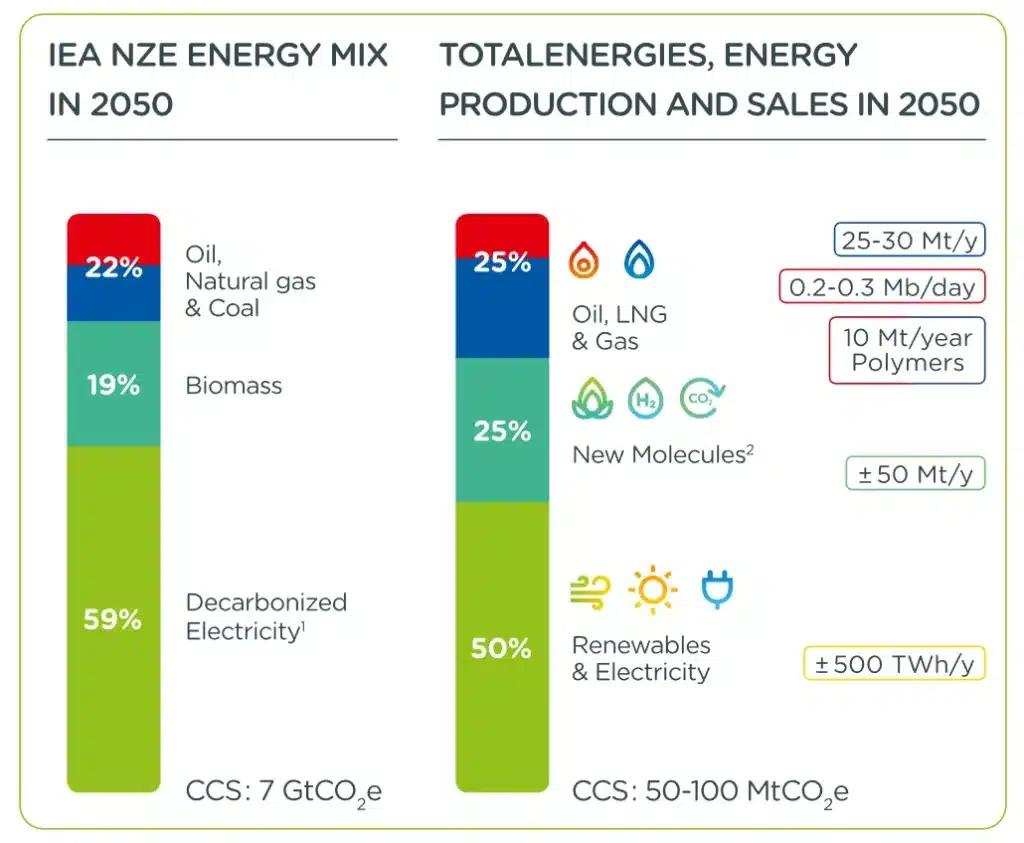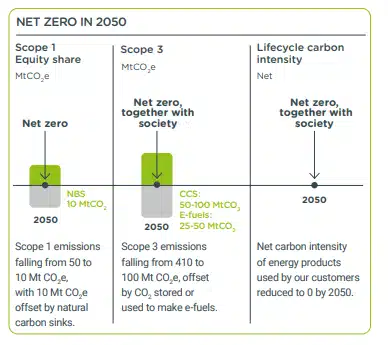
The work carried out since 2021 has made it possible to reinforce the 2050 vision of a Net Zero TotalEnergies, together with society, in line with the Net Zero vision supported by the International Energy Agency.
In its 1.5°C scenario, the IEA is aiming for carbon neutrality by 2050, which requires a 39% reduction in net energy emissions between 2015 and 2030.
Aligned with this scenario, TotalEnergies describes our 2050 vision of a Company for which renewable electricity will account for half of its production; new carbon-free molecules from biomass (biofuels and biogas) or renewable electricity (hydrogen and e-fuels) will represent a quarter; and hydrocarbons (oil and gas) the remaining quarter, with residual emissions fully captured, recycled, or offset.
Reinventing a net zero energy system means producing carbon-free electrons and molecules and developing carbon sinks to absorb CO² from residual hydrocarbons (for producing chemicals, for example).

In 2050:
TotalEnergies would produce:
These hydrocarbons would represent around 10 Mt/year of residual Scope 1 emissions, including methane emissions close to zero (below 0.1 Mt CO² e/year), which would be fully offset by nature-based carbon sink solutions.
These hydrocarbons would represent Scope 3 emissions of around 100 Mt/year. To achieve carbon neutrality together with society, TotalEnergies will help “eliminate” the equivalent of 100 Mt of CO2 a year produced by its customers by developing two activities:
In short, the Company will spend the next ten years building the projects and skills needed to make TotalEnergies a net zero energy provider by 2050.

© COPYRIGHT 2024 TOTALENERGIES NEW ZEALAND LIMITED • DESIGNED BY COAST & CO • DEVELOPED BY MRD